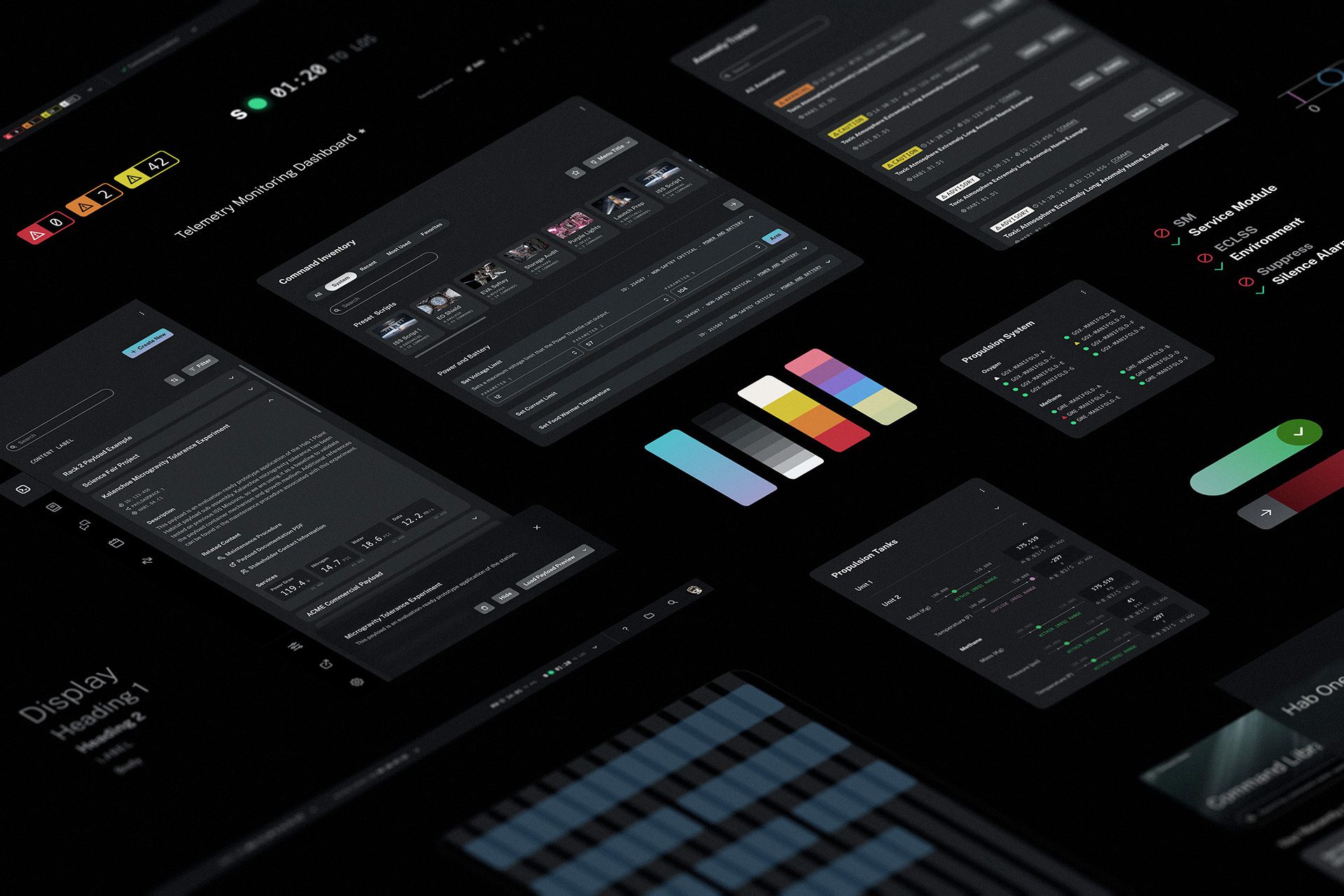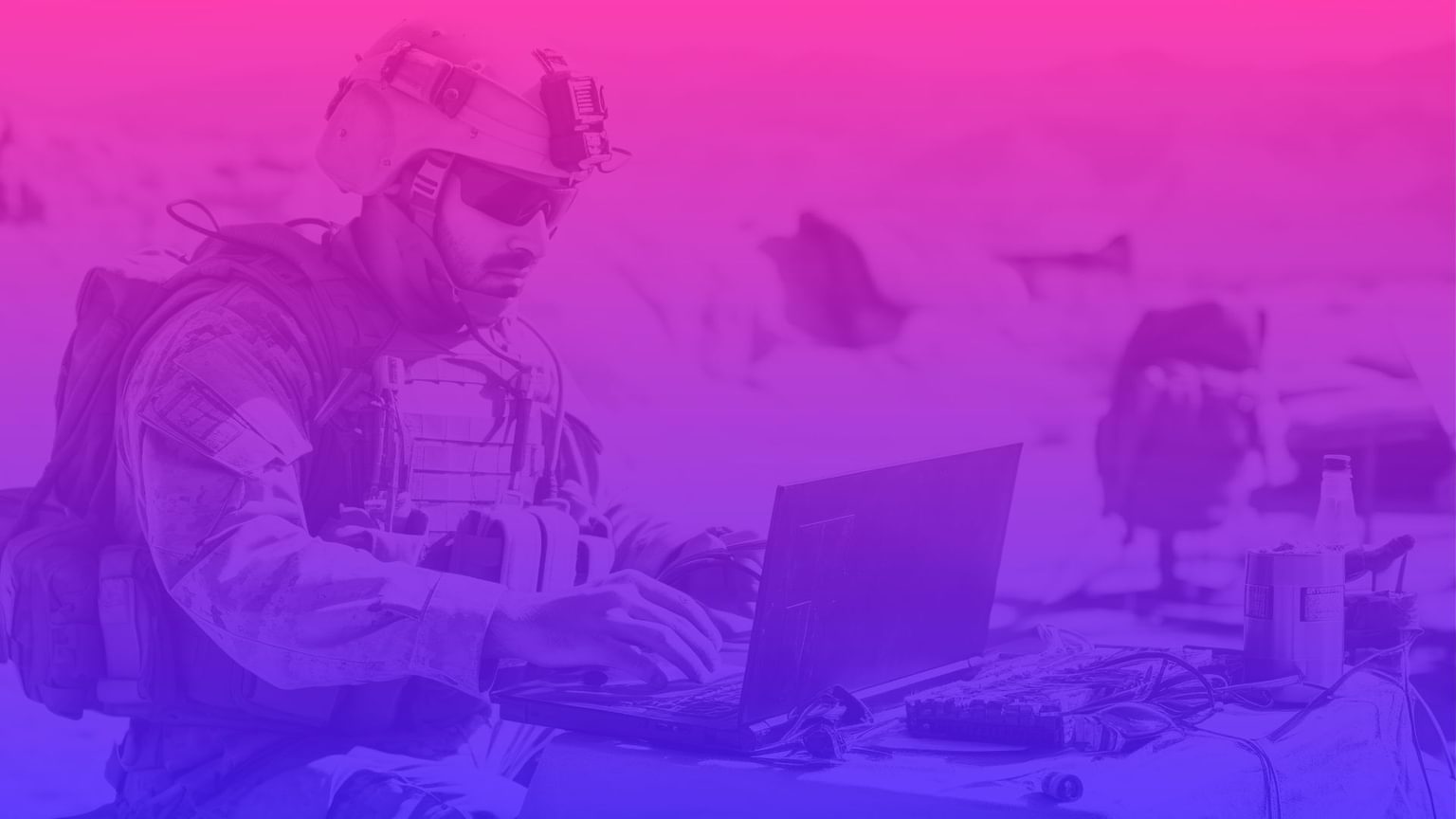
Technology

Matt McElvogue & Clint Rule

Matt McElvogue
Vice President, Design

Clint Rule
Principal Director, Design
MATT MCELVOGUE: "Mission critical systems" refers to things like traffic lights, nuclear power plant management, oxygen systems on a space station. When a system like that fails, it can cause a huge disruption, accidents, or even fatalities. Teague has been doing quite a lot of work in mission critical spaces with digital interfaces, for example rail operations, autonomous vehicles, navigation interfaces in the defense sector, and, more recently, worker interfaces for low Earth orbit. It's fun stuff.
So, Clint, you and I have been on a bunch of those projects. What excites you about this type of work?
CLINT RULE: I mean, I think most designers want to make the world a better place. With mission critical design, the value is so clear and the meaningfulness is so clear. And it has a lot to do with what you were just talking about—the stakes involved. This is something that must be done well. These interfaces are usually helping people complete some very important tasks.
The other area that excites me is research. With mission critical work, you have to rely on subject matter experts, who are often the people using the current systems that need help. It leads to intense collaborative design, like genuine co-design. Plus, there's a type of voyeurism to the research. The spaces and people you get to interact with are truly unique—whether it's a marine recon group executing a simulated mission, or a railroad operation center. Just fascinating places to be.
With mission critical work, you have to rely on subject matter experts, who are often the people using the current systems that need help. It leads to intense collaborative design, like genuine co-design.
MM: What you're saying about co-design also resonates with me. Creating solutions for folks that deal with crappy software is a lot of fun. Let's talk about some of the challenges, though—What’s common in these mission-critical spaces?
CR: One of the unique things that show up in a lot of mission critical work is the presence and influence of regulation or requirements. It's kind of a double-edged sword.
There are certain situations where you have regulation that's long-established and is falling out of trend with what's actually needed from modern interfaces. Let's say, for example, there’s a GPS device that we're working on for the military. Decades ago, they figured out the most important requirements for this device with significant engineering that has robust reliability. So there's a temptation for them to just keep copying and pasting. It's a scary thing to change, given the stakes. In those types of situations, a lot of the work is stakeholder management. It's about having conversations with the right people, and in those conversations, bringing up the soldier's experience and what's actually happening in the field.
MM: Mission critical systems are not as prone to disruptive innovation as much as they should be, in a perfect world.
CR: Right. On the flip side, sometimes we’ll find ourselves in really ambiguous spaces. We were doing work for a spacecraft that would go into low Earth orbit. There are some NASA guidelines, but the FAA doesn't have a whole lot to say about this yet. There are certain situations where it's like, man, it would be really helpful if people had some regulations around this because we're trying to move quickly and we want to be confident in the design decisions we're making.
MM: Being on these projects, I’ve noticed our clients—their companies—are typically more engineering- or developer-focused. I think clients seek us out to work on these types of projects because we are used to diving into highly-regulated, very technical spaces and still working out a way to improve products. What do you think, Clint? How would you describe the value proposition of design for mission critical systems?
As designers, our role is to figure out how to responsibly introduce a lot of this consumer-grade interaction, usability, even desirability, into mission critical contexts.
CR: I think it’s because of—forgive me for using this overused phrase—digital transformation. Products in the consumer space are increasing the divide between these mission critical tools and their efficacy, their usability. More and more people are using iPhones. They're using all these consumer products that are incredibly efficient; incredibly usable. But many of these mission critical tools, whether it’s hardware or software, don't have that intuitive ease-of-use factor. As designers, our role is to figure out how to responsibly introduce a lot of this consumer-grade interaction, usability, even desirability, into mission critical contexts.
MM: One of our defense clients had a good line. They're waking up to the fact that they have to create systems for humans to use versus going through this very lossy process of training humans against outdated legacy systems. There's also the very literal threat of the end user—whether that’s an air traffic control person or a soldier, for example—choosing to use consumer technology to fill a gap once filled by something more secure or more controlled.
There's new competition between suppliers in this space, too. For now, it's minnows nipping at the edge, but bigger players want to increase their ability to win contracts and stay competitive with modern interfaces.
They're waking up to the fact that they have to create systems for humans to use versus going through this very lossy process of training humans against outdated legacy systems.
CR: Good points. Another thing to think about is the time it takes to train workers on legacy systems. It's always been pretty significant, but it seems to be growing. A lot of these organizations see how fast a well-designed product can be integrated. Cost and time savings are tremendous.
Most mission critical tools, like rail freight operations software, for example, have to be functional and operating 24/7, meaning outdated legacy systems have not been touched or redesigned. Everyone's afraid to touch them—afraid of the consequences of taking it offline. So you actually see more features and tools just piled on top. There's almost like this information glut, and the integration is just not happening. It's actually fatiguing the users and making it more difficult for them to arrive at confident decisions.
MM: We both had an old boss who used to call this kind of software a humanitarian crisis. I'd always poke fun at him when he said that. I was like, okay, it's not as bad as lack of water somewhere, right? But I do think about it. You can't help but kind of think about just how many lives are affected by terrible software. There's so much to be improved.
This exclusive interview was shared with our newsletter subscribers. If you'd like to receive future issues of The Quarterly, subscribe below.